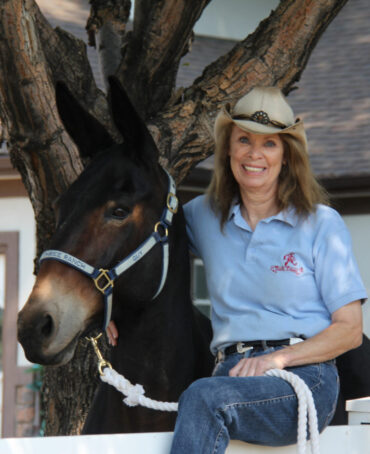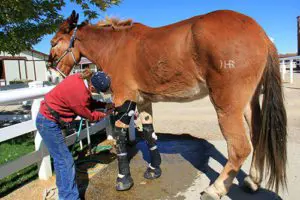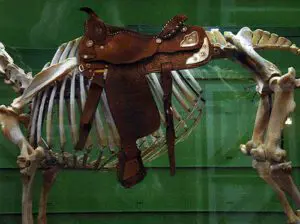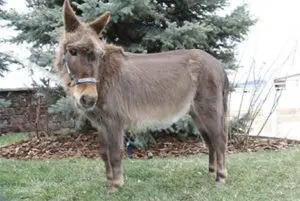 “The passion that Meredith Hodges feels for the equines that she has fought for all her adult life is still as fresh, inspiring and infectious as it was when she first discovered the world of horses, donkeys and mules. She has never wavered in her devotion to them and in her mission to carve a lasting and honored place for them in our world. They are lucky to have her as their champion, but Meredith actually sees it a bit differently. She feels honored and privileged to be a part of their world.”
“The passion that Meredith Hodges feels for the equines that she has fought for all her adult life is still as fresh, inspiring and infectious as it was when she first discovered the world of horses, donkeys and mules. She has never wavered in her devotion to them and in her mission to carve a lasting and honored place for them in our world. They are lucky to have her as their champion, but Meredith actually sees it a bit differently. She feels honored and privileged to be a part of their world.”
View Posts By Category:
Breeding | Donkey Training | Farewells | General Interest
Hearts & Horses | Historical | Interviews | Jasper
Longears People News | Longears Videos | Lucky Three Ranch
Military Mules | Mule Talk! Podcasts | Pack Burro Racing
Showing | Statues & Exhibits | Training | Training Tips

Ground Breaking - Raising the Barn
Hearts and Horses broke ground on a new arena where they will continue to change lives through therapeutic riding. The new arena will be called Lucky Hearts, as much of the funding for the arena was given by Lucky Three Ranch.
Hearts & Horses Virtual Tour
Haven’t made it out to the Hearts & Horses ranch yet? Here’s your chance, thanks to our brand new virtual tour! Discover all of the state-of-the-art facilities designed to heal minds, bodies, and spirits at our 23-acre ranch in Loveland, Colorado.
Latest Podcast

MULE TALK! PODCAST: Rock and Roll: Diary of a Rescue: Part 2
- Hear the amazing story of Rock and Roll – the rescued draft mule team, the discovery of their injuries, and the dedicated team of professionals working hard to give longevity to their lives. There were comebacks and setbacks; this incredible story will touch your heart and soul.
- This episode explains in detail about Roll since the passing of his half-brother, Rock. They spent many years together hitched and pulling a wagon.
Learn more on Mule Talk podcast.
All Posts

MULE CROSSING: Correct Saddle Placement & Related Issues

MULE CROSSING: Winter Fun with Your Equine

MULE CROSSING: Fitting Tack Equipment

MULE CROSSING: The Round Pen
-
- There has been spirited debate between English and Western trainers as to the real value of the Round Pen as a training aid, since it can produce undue stress on the fragile joints of the equine-in-training.
- Do not BEGIN training your equine in the Round Pen, because an unbalanced and inexperienced equine in uncontrolled flight, in ...

MULE CROSSING: Making History with Mules, Part 3

MULE CROSSING: Making History with Mules, Part 2

MULE CROSSING: Making History with Mules Part 1

Equines of a Certain Age

MULE CROSSING: Longears Loving Impact

MULE CROSSING: Living with Longears

MULE CROSSING: Hoof Differences in Horses, Donkeys and Mules

MULE CROSSING: Keys To Successful Training, Part 1: Attitude and Approach

MULE CROSSING: A Bit About Communication with Your Equine

MULE TALK! PODCAST: Good Basic Training Includes Common Sense
- Improve your communication by learning and speaking the equine's language.
- Learn what type of touch and caress feels good to him.
- Develop better and kinder training techniques to enable your mule to perform better.
- Using kinder training techniques along with showing leadership to your mule will re-enforce the bond between you.
- Make your verbal communication and body language clear to your mule and donkey.
- Excessive and forceful training techniques used on the mule and donkey, simply don't work. This creates trust issues ...

